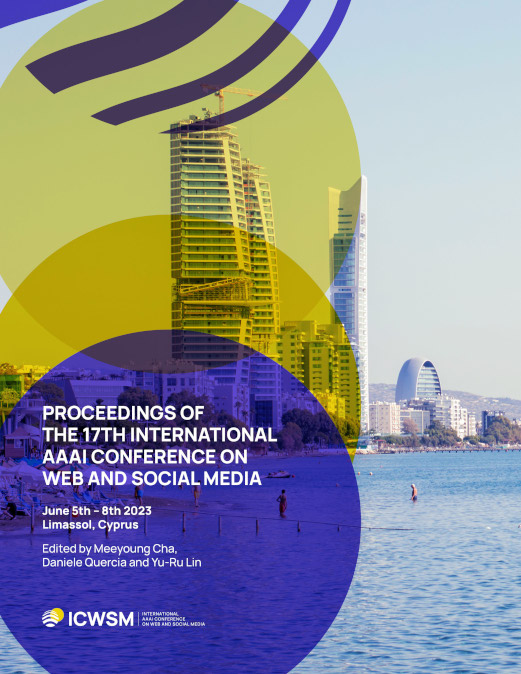Who Is behind a Trend? Temporal Analysis of Interactions among Trend Participants on Twitter
DOI:
https://doi.org/10.1609/icwsm.v17i1.22203Keywords:
Trend identification and tracking; time series forecasting, Social network analysis; communities identification; expertise and authority discoveryAbstract
Trends are a fundamental component of today's fast-evolving media landscape. Still, a lot of questions about who participates in such trends remain unanswered. Are trends driven by individual actors, or do interactions between actors reveal community structures? If so, do those structures change during the life cycle of a trend or between topically similar trends? In short: Who is behind a trend? This paper contributes to a better understanding of these questions and, in general, actor networks underlying trends on social media. As a case study, we leverage a large Twitter dataset from the EURO2020 soccer competition to detect and analyze topical trends. Our novel Gaussian fitting method allows separating trend life cycles into up- and down-trend components, as well as determining the duration of trends. An event-based evaluation proves good performance results. Given separate trend stages and topically similar trends at different points in time, we conduct a temporal analysis of the actor networks during trends. Our findings not only reveal a large overlap of participants between successive trends but also indicate large variations within a trend life cycle. Furthermore, actor networks seem to be centred around a small number of dominant users and communities. Those users also show large stability across similar trends over time. In contrast, temporally stable community structures are neither found within nor across topically similar trends.Downloads
Published
2023-06-02
How to Cite
Ziegler, J., & Gertz, M. (2023). Who Is behind a Trend? Temporal Analysis of Interactions among Trend Participants on Twitter. Proceedings of the International AAAI Conference on Web and Social Media, 17(1), 960-969. https://doi.org/10.1609/icwsm.v17i1.22203
Issue
Section
Full Papers

